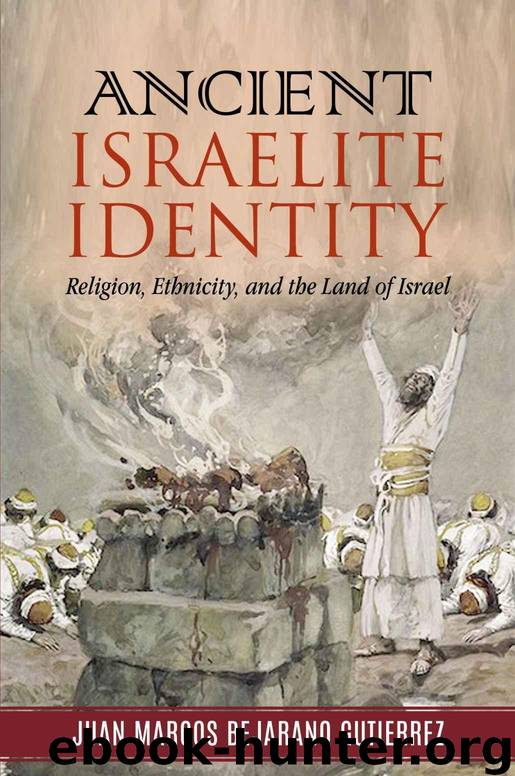Ancient Israelite Identity: Religion, Ethnicity, and the Land of Israel by Juan Marcos Bejarano Gutierrez

Author:Juan Marcos Bejarano Gutierrez
Language: eng
Format: azw
Publisher: Yaron Publishing
Published: 2018-12-30T23:00:00+00:00
The return of exiles under Zerubbabel approved by decree of Cyrus, and the partial rebuilding of the Temple was later augmented by the return under Ezra and Nehemiah under Artaxerxes. Berquist points out that
“Cyrus’ interest in the movement of population and the return of religious artifacts reflected the larger tendencies of the empire to expand its borders. A preparatory step toward such conquest would be the strengthening of the borders and neighboring areas, such as Jerusalem…. Cyrus intended that the support of Jerusalem and other similar areas would assist his policies of imperial expansion.”[78]
These returns inaugurated the partial reconstitution of the Commonwealth of Israel after the tragic destruction of Solomon’s Temple and the loss of Judahite sovereignty. They also served to engender a spiritual revitalization mainly attributable to a sense of authority associated with ancient Israelite sacred texts and new emerging and competing identities.[79] Ezra’s reforms served to redefine the nature of previous Israelite distinctiveness and to create a sense of Jewish identity and history invariably connected to Toraitic legislation.
Consequently, a metamorphosis from a people-nationhood self-understanding to that of a confessional community has been argued. This argument is linked to the Judean abandonment in the early post-exilic period of political independence and its redirected focus on the rebuilding of the Temple as a cornerstone of is religious identity.[80] However, the process was not as simple as this statement might suggest or casual reading of the biblical text might seem to imply. The return of the exiles Judahite affected conflict between the Judahite groups that had not been carried off to Babylon. Also, hostility is reported to have existed between elements of the former Northern Kingdom and the returnees under Ezra and Nehemiah. This post-exilic period lasted for more than a century.
Download
This site does not store any files on its server. We only index and link to content provided by other sites. Please contact the content providers to delete copyright contents if any and email us, we'll remove relevant links or contents immediately.
The Zohar: 1 (The Zohar: Pritzker Edition) by Daniel C. Matt(495)
The Zohar: 2 (The Zohar: Pritzker Edition) by Daniel C. Matt(481)
The Jewish Study Bible by Adele Berlin & Marc Zvi Brettler(464)
The Harlot by The Side of The Road: Forbidden Tales of The Bible(436)
Handbook on the Pentateuch by Victor P. Hamilton(430)
Relations of Power in Early Neo-Assyrian State Ideology by Mattias Karlsson(413)
Arcana Coelestia, Volume 3 (Extended Annotated Edition) by Emanuel Swedenborg(413)
Battered Love (Overtures to Biblical Theology) by Renita Weems(383)
The Privileged Divine Feminine in Kabbalah by Moshe Idel;(371)
The Bible as it was by Kugel James L(340)
Arcana Coelestia, Volume 2 (Extended Annotated Edition) by Emanuel Swedenborg(340)
Proverbs (Baker Commentary on the Old Testament Wisdom and Psalms) by Longman III Tremper(338)
Assyrian and Babylonian Scholarly Text Catalogues by Ulrike Steinert(334)
Arcana Coelestia, Volume 8 (Extended Annotated Edition) by Emanuel Swedenborg(299)
Representing Zion by Frederik Poulsen(291)
Job by Edward L. Greenstein(273)
Arcana Coelestia, Volume 10 (Extended Annotated Edition) by Emanuel Swedenborg(268)
The Materiality of Divine Agency by Beate Pongratz-Leisten & Karen Sonik(268)
Arcana Coelestia, Volume 6 (Extended Annotated Edition) by Emanuel Swedenborg(259)
